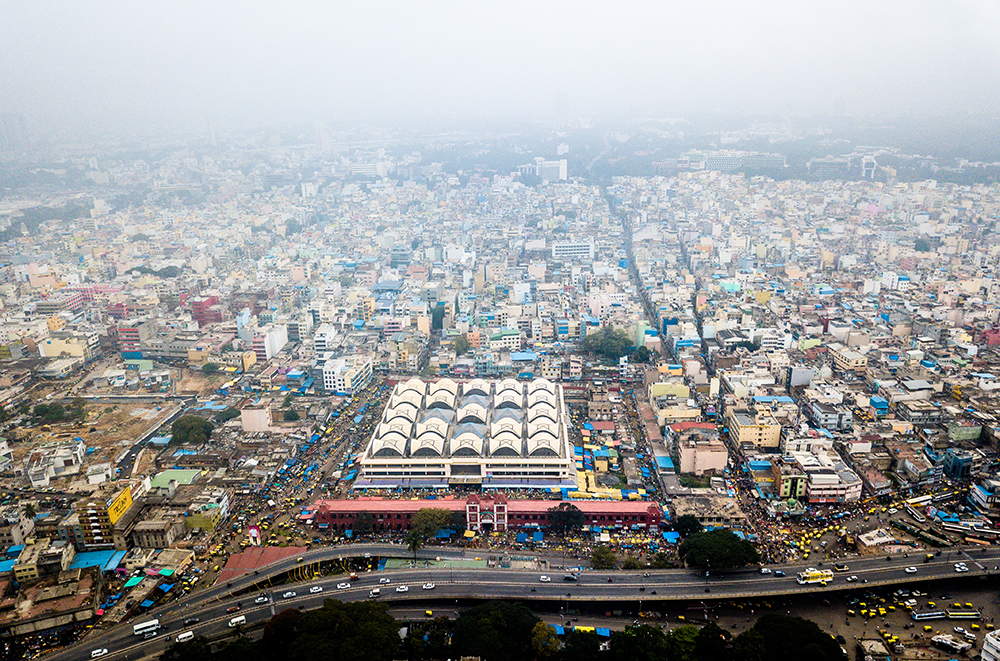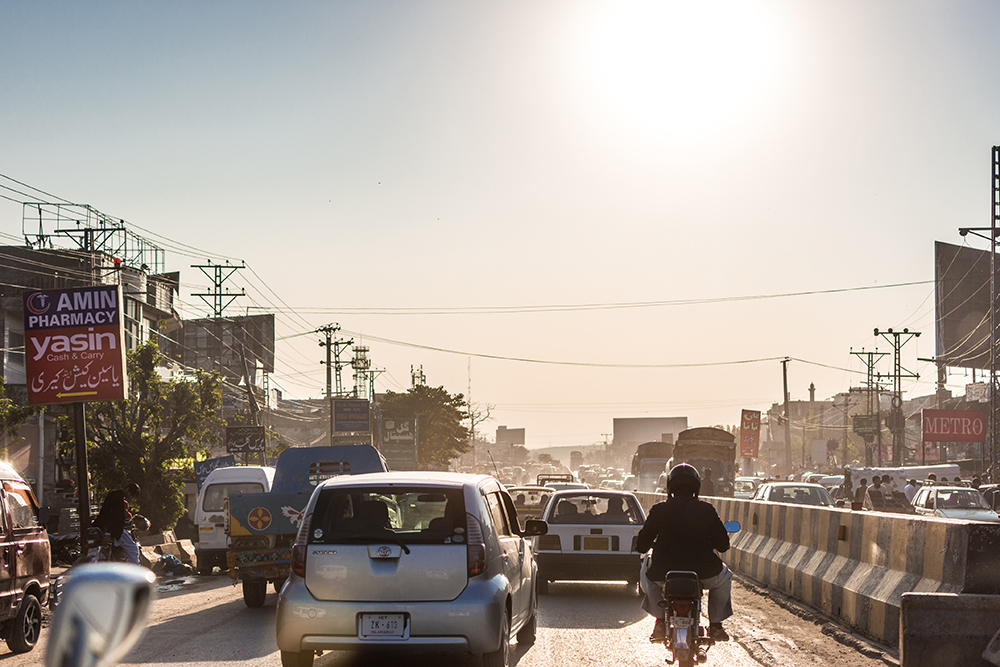
While most attention on greenhouse gases (GHG) reduction has been focused on the developed world – Europe, North America, Australasia and north-east Asia – it is emerging economies where more attention needs to be given.
South-west and south Asia – stretching from Turkey in the west to Bangladesh in the east – is one of the fastest-expanding regions of the world. That will result in potentially huge increases in GHG emissions unless action is taken.
A new report by the International Transport Forum (ITF), an intergovernmental organisation with 64 member countries, seeks to offer solutions.
ITF South and Southwest Asia Transport Outlook was written jointly by the ITF and the United Nations Economic and Social Commission for Asia and the Pacific.
It looks at how demand for passenger mobility and freight transport will evolve in coming decades and what this means for transport-related emissions.
The report provides recommendations for the 10 countries in the sub-region on how to underpin economic growth through better connectivity with sustainable transport solutions.
These are based on three scenarios for future transport demand and associated CO2 emissions out to 2050 (see box p22).
Business as usual?
The baseline scenario (Recover) assumes government policies return to ‘business as usual’ after the pandemic. Two other scenarios (Reshape and Reshape+) assume governments adopt more ambitious policies after the pandemic.
The sub-region is experiencing rapid changes in transport demand. With two billion people, south and south-west Asia’s population accounted for 25% of the world population in 2020. The area is also responsible for 10% of the CO2 emissions from the global transport sector. Expected economic growth will translate into increased demand for transport and, given transport's current dependence on fossil fuels, a rise in emissions.
The sub-region’s population is expected to grow by 23% by 2050, reaching around 2.5 billion.
Slightly more than half these people will be urban dwellers. This will place greater pressure on public transport, and the transport sector is already the highest GHG-emitting sector after electricity generation. So, policies are needed to curb further expected rises in CO2.
Before the pandemic, the sub-region had been one of the fastest-growing in the world, but insufficient transport infrastructure remains a major cause of low connectivity within it.
The area’s road and rail networks are underdeveloped. Private sectors have developed the shipping and aviation sectors, but land-based transport infrastructures still require substantial involvement from governments.
Land-use problem
Certainly, some work is ongoing. Among the initiatives are the Turkey – Iran – Pakistan – India – Bangladesh – Myanmar (TIPI-BM) Road Corridor.
On the railway front, the Istanbul – Tehran – Islamabad – Delhi – Kolkata – Dhaka-Yangon (ITI-DKD-Y) Container Rail Corridor opens the possibility of new cost-effective transport options.

A growing population means that private vehicle ownership has continued to grow, but many countries have also launched public transport projects, including mass transit systems in urban areas.
However, designing urban transport systems that are inclusive, accessible and sustainable remains a significant challenge for many countries. Problems include a lack of land use and transport integration, institutional fragmentation, budgetary constraints and the existence of faster and more affordable informal paratransit operators.
While some countries have been focusing on enhancing the uptake of electric vehicles (EVs) and sustainability of transport infrastructure, others still have a focus on improving road connectivity in rural and remote areas.
Countries are not oblivious to climate change - Bangladesh, in particular, suffers badly from rising sea levels.
A push to electrify transport is a common goal across several countries. Indian Railways, for example, aims to become the world’s largest ‘green’ railway and is moving towards becoming a net-zero carbon emitter by 2030. The company’s dedicated freight corridors are being developed as a low-carbon green transportation network.
On the roads, India’s green transport programmes include pushing for EV uptake and transitioning to low-carbon electricity, especially for light vehicles and passenger cars.
Emission reduction
Pakistan in recent years has focused on air pollutant emission reduction. The government has developed the National Electric Vehicle Policy aimed at EVs capturing 30% of all passenger vehicle and heavy-duty truck sales by 2030 and 90% by 2040. It has set even more ambitious goals for two- and three-wheelers and buses - 50% of new sales by 2030.
At the other end of the scale, landlocked Bhutan is prioritising development of an affordable and sustainable transport system. The government aims to swap approximately 300 conventional taxis for electric versions, with charging stations to be established throughout the country by year-end.
Nepal, meanwhile, has reduced import taxes for EVs and plans to make up to 90% of all private passenger vehicles electric by 2030.
The freight sector is crucial in developing sustainable transport and reducing emissions. Freight transport in the sub-region was responsible for 45% of total transport CO2 emissions in 2015. Even with the most ambitious set of mitigation policies, demand for freight is projected to almost triple by 2050, so robust and rapid action is required to limit the associated emissions from the sector.
Under current policies, freight will still be responsible for 40% of emissions by 2050. However, measures under the Reshape scenario would mean emissions could be 62% less by 2050 than in Recover. Reductions in a Reshape+ scenario would be even greater – 73% below Recover by 2050.
Rapid urbanisation
The sub-region is experiencing rapid urbanisation. As cities grow and e-commerce increases, urban freight transport will become a major sector for decarbonisation.
Urban freight transport usually includes multiple short-distance trips with small loads. These represented only 3% of total freight activity in 2015 but were carbon intensive, accounting for 8% of all transport sector emissions.
Under ‘business-as-usual’, CO2 emissions will more than double between 2015-2050, to 1.14 billion tonnes. Worryingly, they would peak beyond 2050. Under Reshape and Reshape+, they peak in 2020 and fall continuously after. Under Reshape+, emissions in 2050 could be almost 80% lower compared to the ’business-as-usual’ option.
Rail transport in the sub-region is often overlooked by outsiders, but is the mode forecast to experience the highest growth between 2020-2050, increasing by almost 330%. It remains the dominant mode of transport for non-urban passenger travel.
This growth reflects planned investment in the development of rail infrastructure, with a move towards high-speed rail and increased frequencies. Given the lower energy and CO2 intensities of rail transport, shifting passengers from more intensive modes such as private cars and airliners to rail will be critical to meeting the transport sector’s climate goals.
Sustainable fuels
Countries will need to increase uptake of sustainable fuels and implement carbon pricing schemes to achieve this. Greening the grid that powers EVs and improving battery technologies will also be crucial.
Although all the region’s countries have set ambitious targets for renewable energy generation, reversing the growth of non-renewable energy consumption is unlikely in the short term because of the sub-region’s huge energy supply deficits. With low penetration of EVs, the transport sector may remain a major source of emissions.
To combat this, the panel’s recommendations include targeting road freight. Measures could include an ambitious energy transition for long-haul, heavy-duty road freight vehicles, including strict fuel economy and CO2 emissions standards, aerodynamic retrofits, reduced rolling resistance of tyres and increased engine efficiency.
In cities, investing in public transport will have to be prioritised over developing new infrastructure for private vehicles. One critical method of reducing emissions is likely to be carbon pricing schemes, to help convert users to greener technologies.
Carbon pricing, deployment of charging infrastructure and promotion of off-peak deliveries are achievable measures that can be adopted to reduce emissions from urban freight transport.
However, addressing urban freight challenges could be difficult, due to the involvement of multiple stakeholders. There are various ways to improve this situation, including developing urban consolidation centres and shifting freight traffic to off-peak hours.
There are already attempts to increase the share of rail freight. Indian Railways has an ambitious target of moving 45% of the country's freight by 2030, compared to the current 27%.
Sustainable freight transport requires financing, and governments must lead on this score, says the report.
Recover, Reshape & Reshape+
The report sets out three policy courses to improve connectivity while reducing emissions: Recover, Reshape and Reshape+.
Under Recover, a ‘business-as-usual’ approach sees governments prioritise economic recovery by reinforcing established economic activities. They continue to pursue existing, or imminent, transport decarbonising commitments.
Reshape represents a paradigm shift for transport; governments adopt transformational decarbonisation policies. These encourage changes in transport users’ behaviour; uptake of cleaner energy; and investment in vehicle technologies and infrastructure to meet environmental goals.
In Reshape+, governments seize decarbonisation opportunities created by the pandemic, which supplement Reshape. These include reinforcing changes made during the pandemic, such as reducing business travel or encouraging walking and cycling. Some of these policies are fast-tracked or implemented more forcefully than in Reshape.





